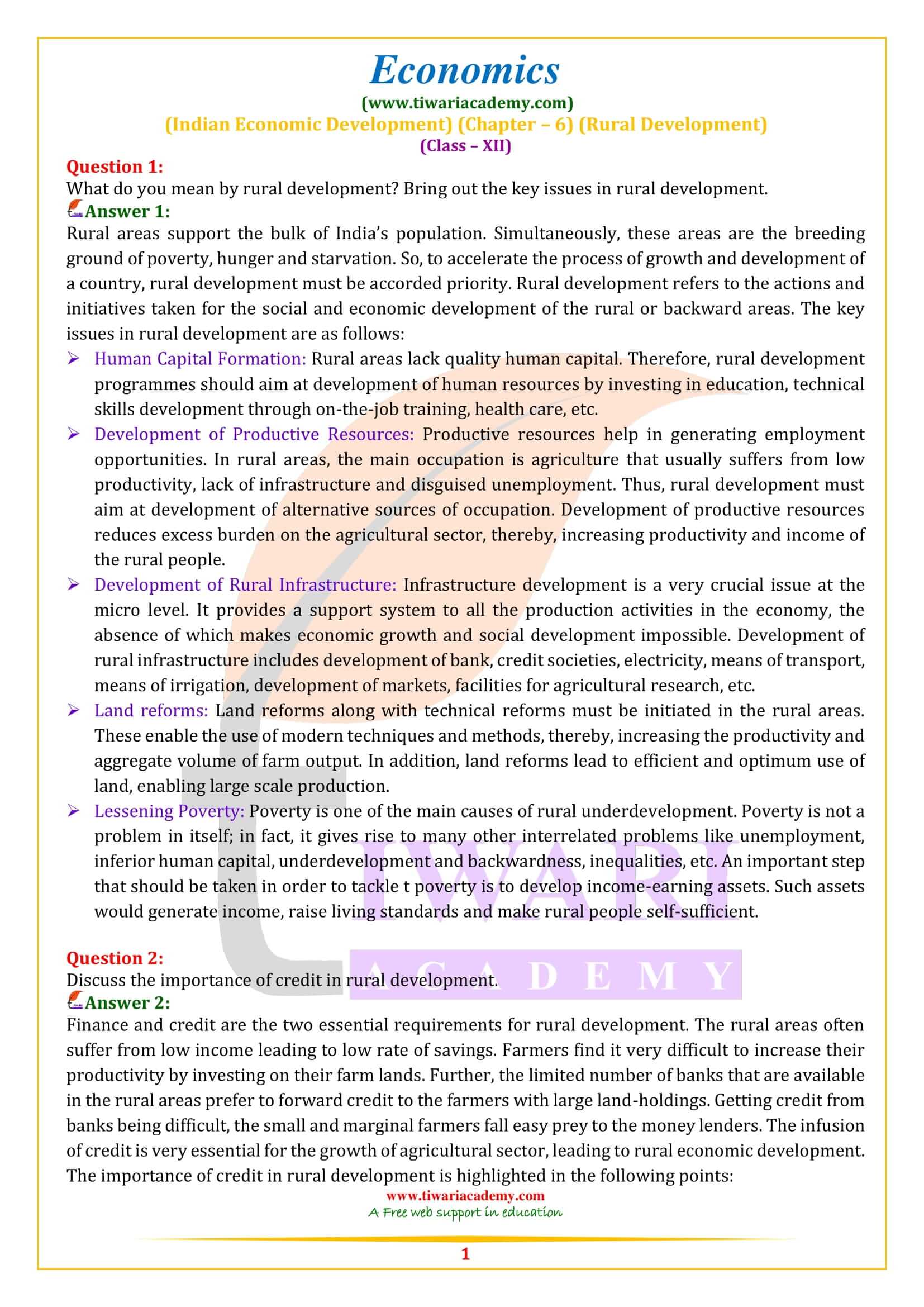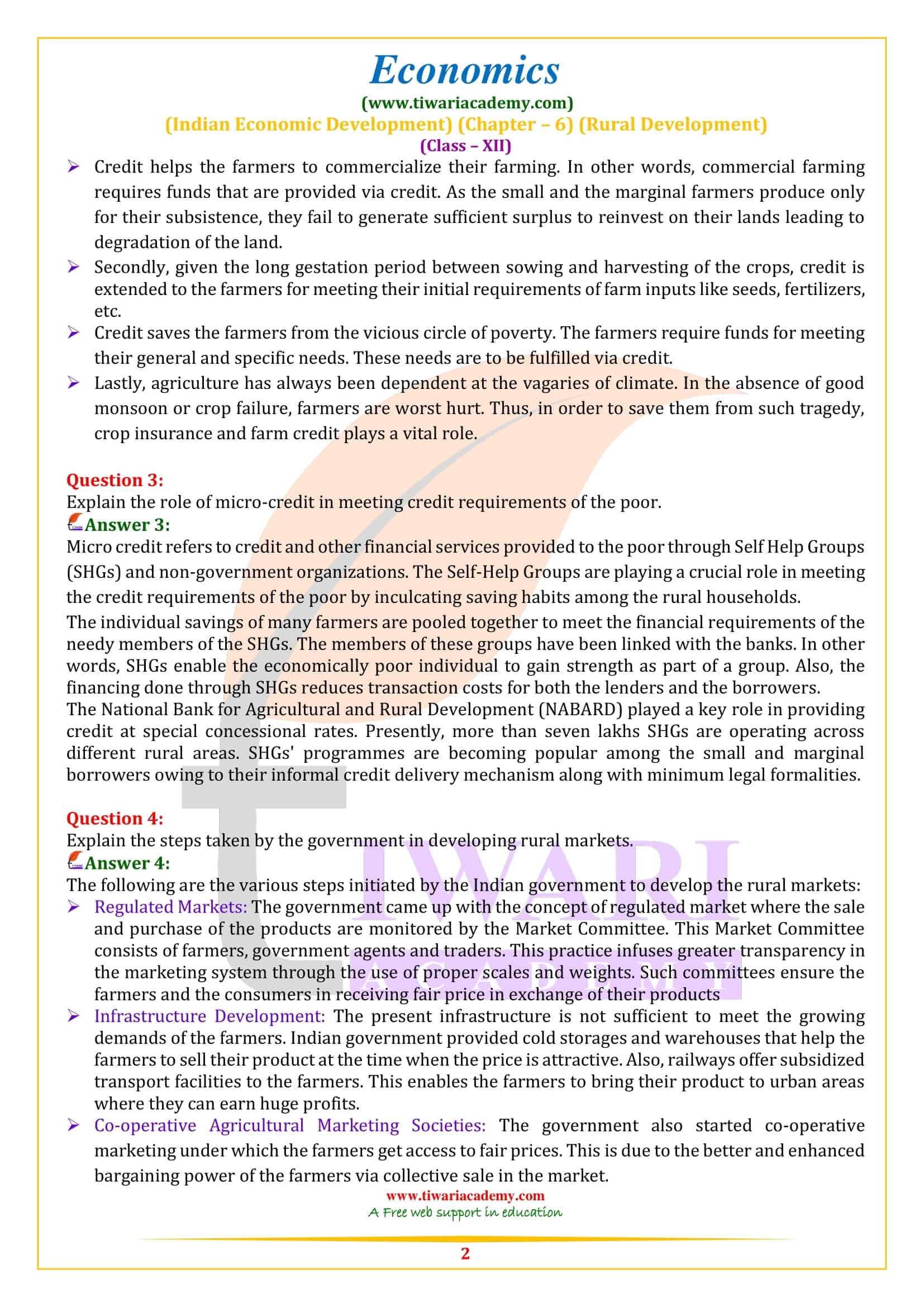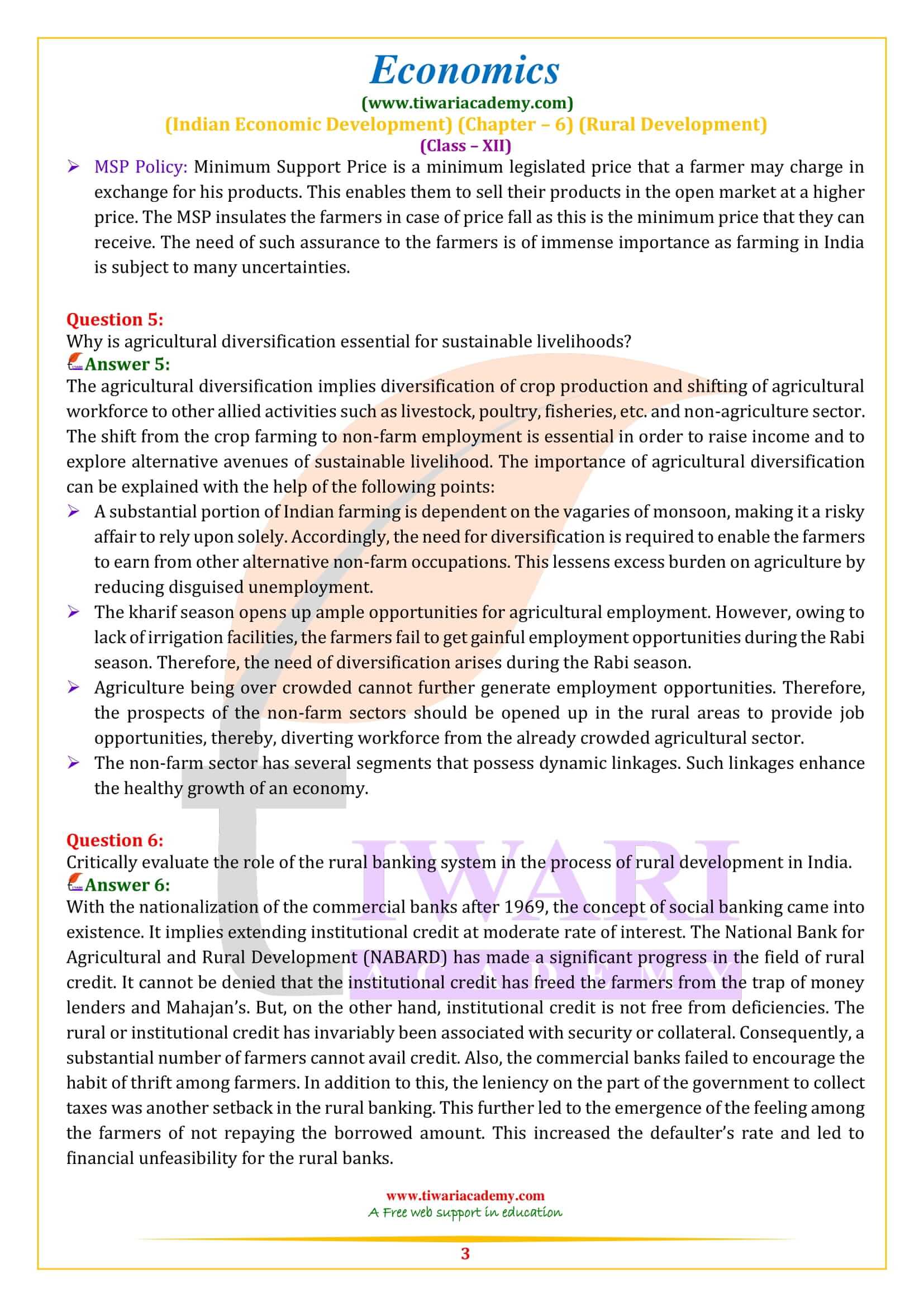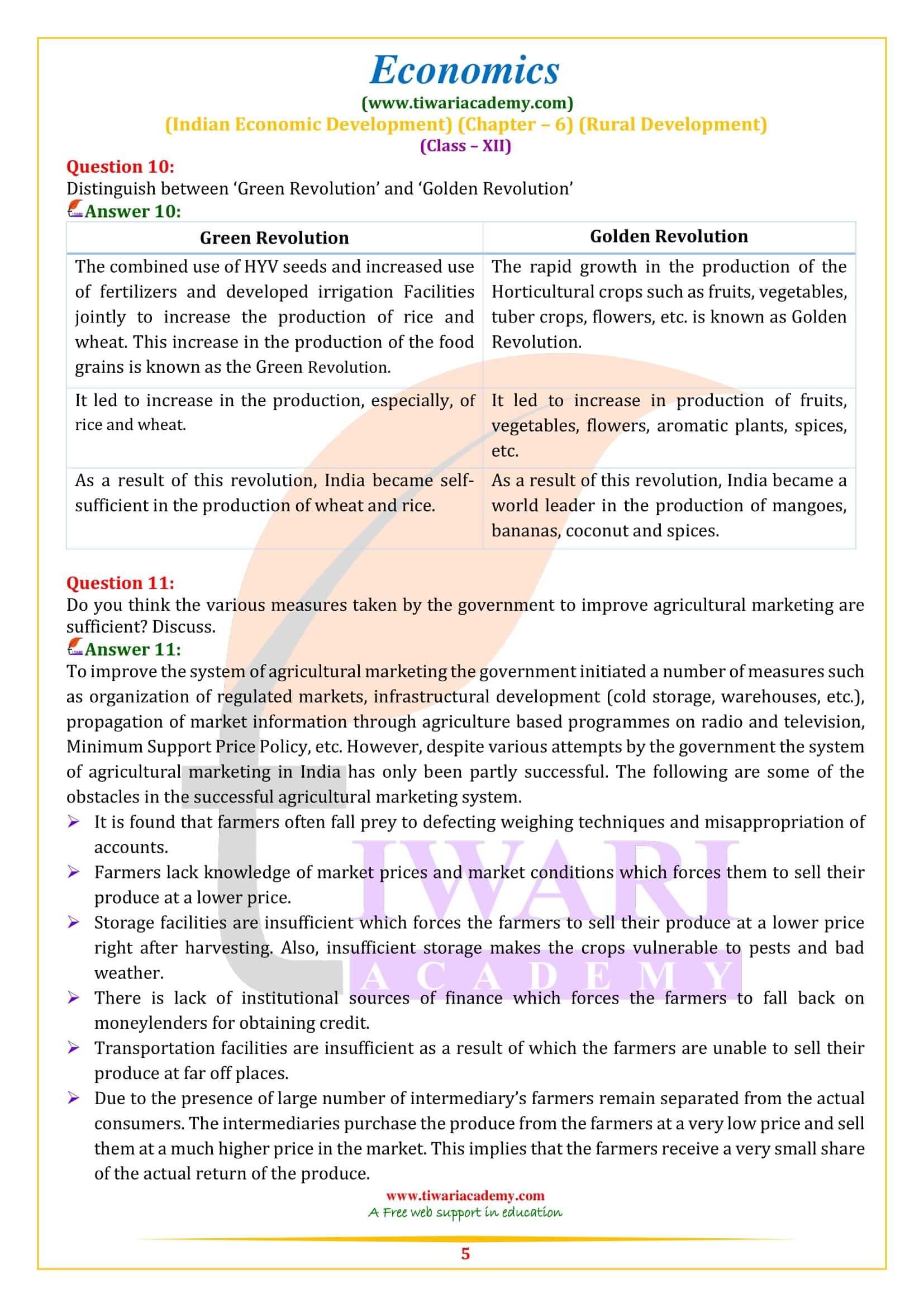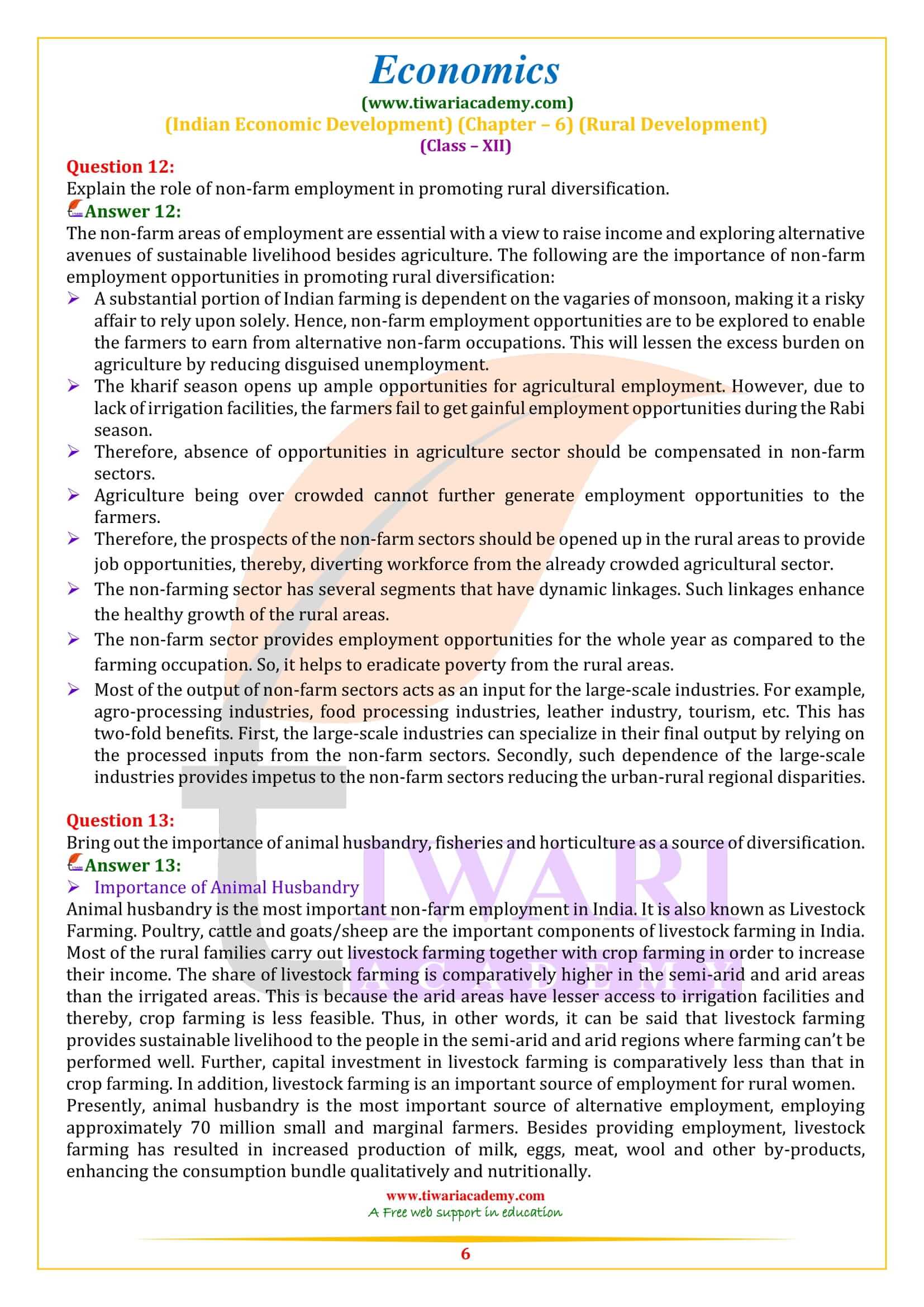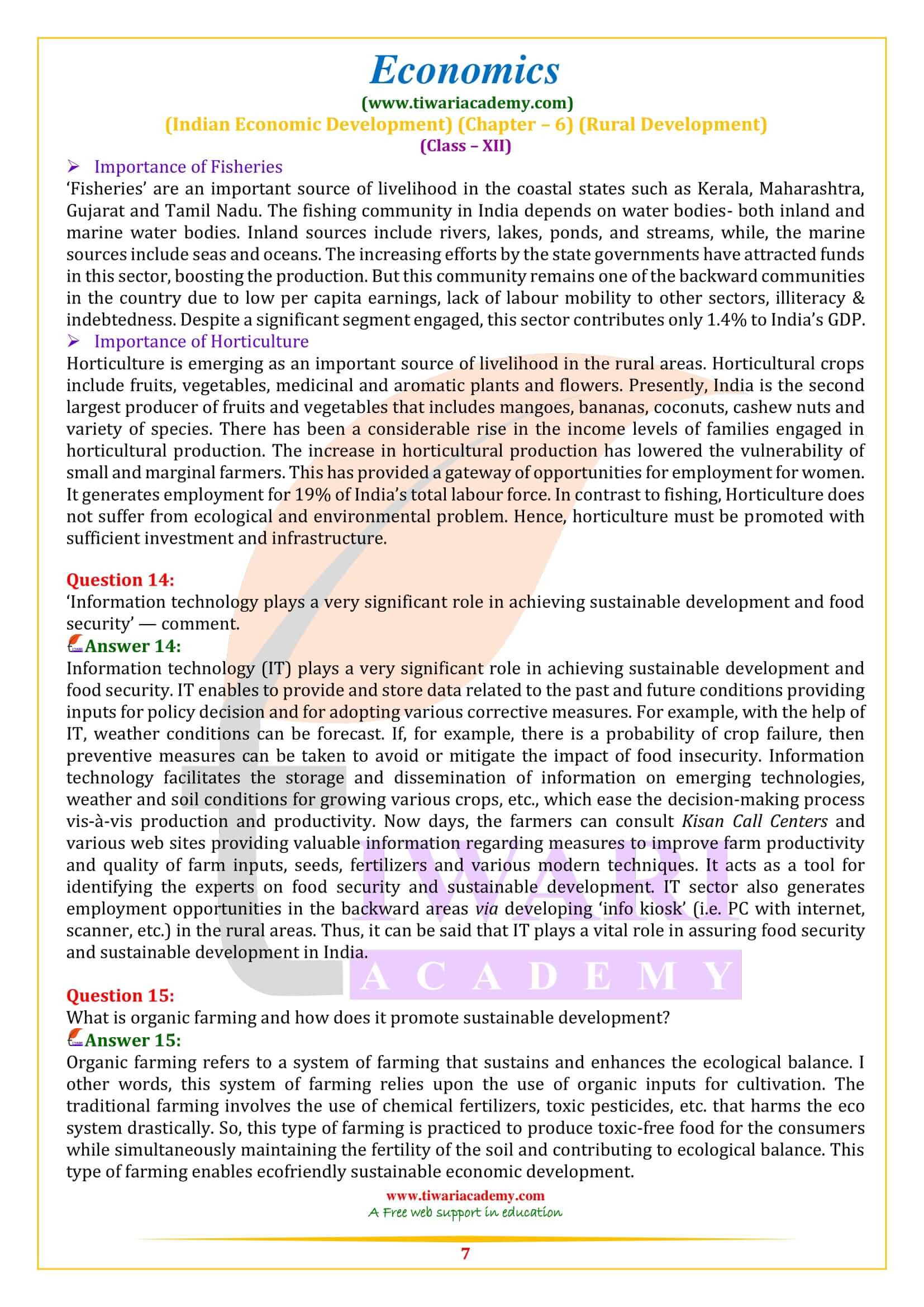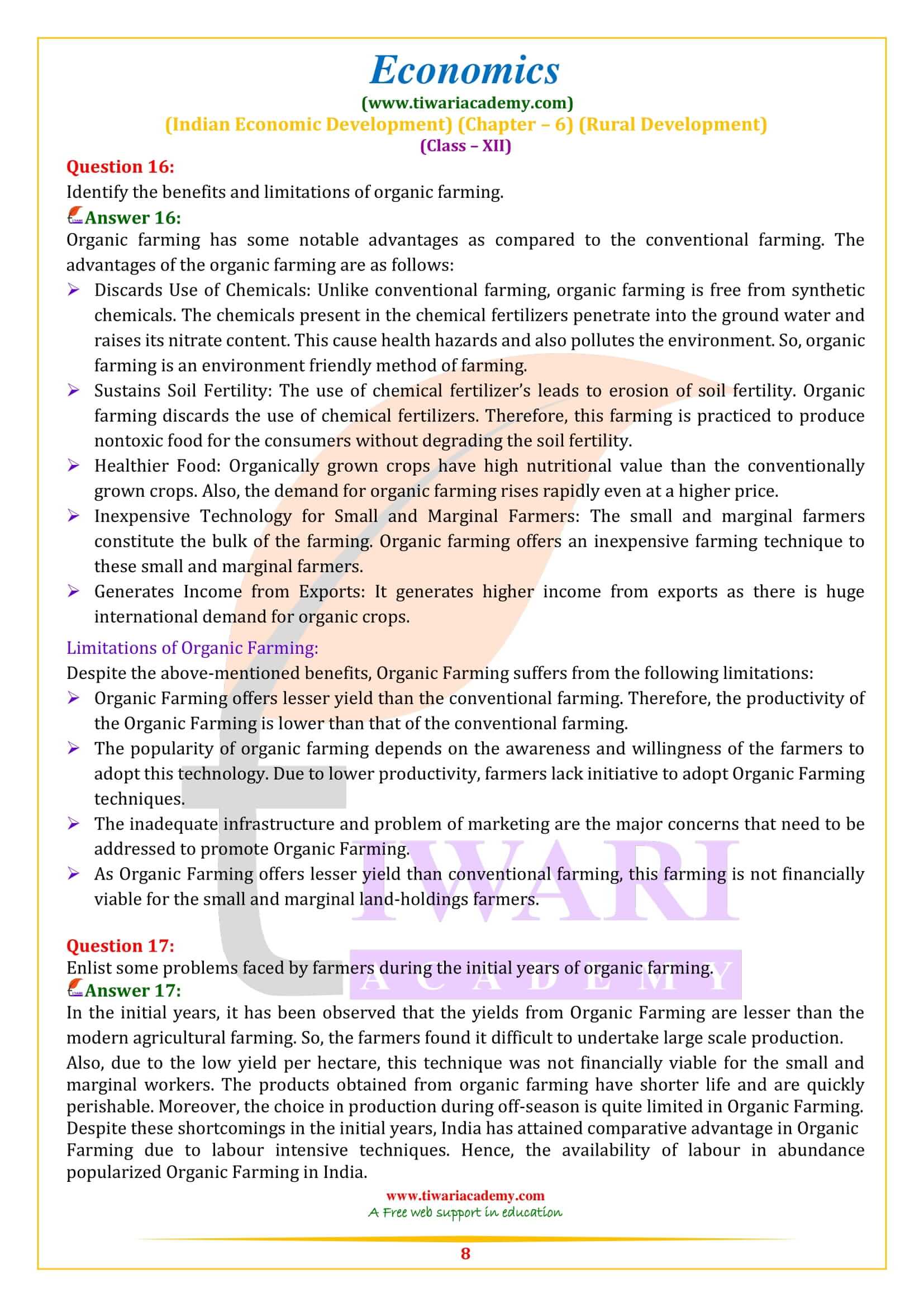NCERT Solutions for Class 12 Indian Economic Development Chapter 6 Rural Development in Hindi and English Medium with chapter’s intext question answers for session 2024-25. Students of class 12 Economics can get here not only solutions but the MCQ and Extra Important Question answers also.
Class 12 Indian Economic Development Chapter 6 Question Answers
What is Rural Development?
Rural development could be a comprehensive term. It primarily focuses on action for the event of areas that are insulant behind within the overall development of the village economy. A number of the areas that are difficult and want contemporary initiative for development in rural India embody. Development of human resources including– literacy, more specifically, feminine literacy, education and talent development–health, addressing each sanitation and public health, Land reforms.
Development of the productive resources of every neck of the wood, Infrastructure development like electricity, irrigation, credit, marketing, transport facilities as well as construction of village roads and feeder roads to near highways, facilities for agriculture analysis and extension, and knowledge dissemination.
Alleviation of Economic Condition
Special measures for alleviation of economic condition and conveyance concerning vital improvement within the living conditions of the weaker sections of the population emphasising access to productive employment opportunities All this suggests that individuals engaged in farm and non-farm activities in rural areas need to be supplied with varied means facilitate them increase the productivity. They conjointly ought to lean opportunities to diversify into varied non-farm productive activities like food process. Sanctionative them higher and cheaper access to tending, sanitation facilities at workplaces and houses and education for all would conjointly ought to lean high top priority for fast rural development. Throughout 2014-15, the GVA rate of agriculture and its allied sectors is but one per cent.
Students determine decline publicly investment since 1991 because the major reason for this. They conjointly argue that inadequate infrastructure, lack of alternate employment opportunities within the business or service sector, increasing casualisation of employment etc., additional impede rural development. The impact of this development is seen from the growing distress witnessed among farmers across totally different parts of India. Against this background, we are going to critically check out a number of the crucial aspects of rural India like credit and selling systems, agricultural diversification and therefore the role of organic farming in promoting property development.
Credit and Marketing in Rural Areas
Growth of rural economy depends totally on infusion of capital, from time to time, to understand higher productivity in agriculture and non-agriculture sectors. Because the time gestation between crop sowing and realisation of financial gain once production is sort of long, farmers borrow from numerous sources to satisfy their initial investment on seeds, fertilisers, implements and alternative family expenses of wedding, death, spiritual ceremonies etc. At the time of independence, moneylenders and traders exploited little and marginal farmers and landless labourers by loaning to them on high interest rates and by manipulating the accounts to stay them in an exceedingly debt-trap.
A significant amendment occurred once in 1969 when India adopted social banking and multi-agency approach to adequately meet the requirements of rural credit. Later, the National Bank for Agriculture and Rural Development (NABARD) was found out in 1982 as an apex body to coordinate the activities of all establishments concerned within the rural finance system. The Revolution was a harbinger of major changes within the system because its crystal rectifier to the diversification of the portfolio of rural credit towards production-oriented loaning.
Institutional Structure of Rural Banking
The institutional structure of rural banking these days consists of a group of multi-agency establishments, namely, business banks, regional rural banks (RRBs), cooperatives and land development banks. They’re expected to dispense adequate credit at cheaper rates. Recently, assistance teams (henceforth SHGs) have emerged to fill the gap within the formal system as a result of the formal credit delivery mechanism has not solely proved inadequate however has additionally not been absolutely integrated into the rural social and community development. Since some reasonably collateral is needed, huge proportion of poor rural households mechanically out of the credit network. The SHGs promote thrift in little proportions by a minimum contribution from every member. From the pooled cash, credit is given to the necessitous members to be owed in little instalments at affordable interest rates.
Rural Banking- A Critical Appraisal
Rapid growth of the banking industry had a positive impact on rural farm and non-farm output, financial gain and employment, particularly once the revolution, it helped farmers to avail services and credit facilities and a range of loans for meeting their production wants. Famines became events of the past; we’ve got currently achieved food security that is mirrored within the copious buffer stocks of grains. However, all isn’t well with our banking industry. With the doable exception of the business banks, different formal establishments didn’t develop a culture of deposit mobilisation, disposition to worthy borrowers and effective loan recovery. Agriculture loan default rates are interactively high. Why farmers didn’t pay back loans? It’s alleged that farmers are deliberately refusing to pay back loans. What can be the reasons?
Growth and Promotion of the Agricultural Banking Sector
The growth and promotion of the agricultural banking sector has taken a backseat once reforms. To boost things, in recent years, all the adults are inspired to open bank accounts as a neighbourhood of a theme called as Jan-Dhan Yojana. Those bank holders will get ₹1-2 lakh accidental sum and draft facilities for ₹10,000 and find their wages, maturity pension and different social insurance payments of the govt transferred to bank accounts.
There’s no ought to keep minimum bank balance. This has diode to over than 40 crore folks opening bank accounts; indirectly it’s promoted thrift habit and economical allocation of monetary resources significantly in rural areas. Banks conjointly might mobile funds of over ₹1,40,000 crores through these accounts.
What are the important topics in the topic Rural Development of class 12th Indian economics development?
Following topics are important from examination point of view:
- Rural Credit and Rural Banking.
- Agricultural Marketing System.
- Sustainable development and organic farming.
What topic has been recently added in the chapter 6 of class 12th Indian economics development?
The topic “Sustainable development and organic farming” has been added as part of syllabus for the year 22 – 23 by the CBSE for class 12th paper on Economics.
What are some new type of questions in 12th Economics chapter 6, being asked in the last few years Board examinations?
The “match the following” type of questions are of recent origin. These could carry four marks.
